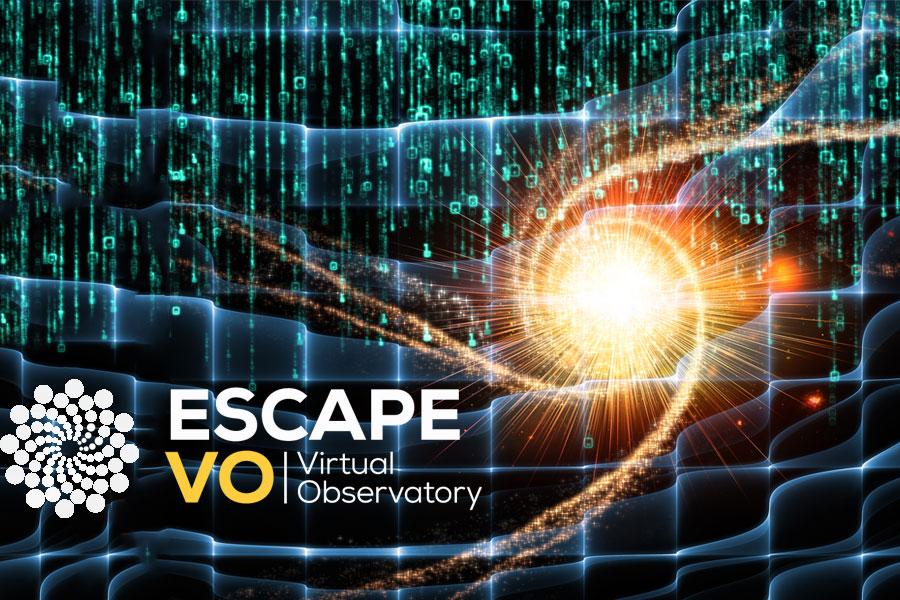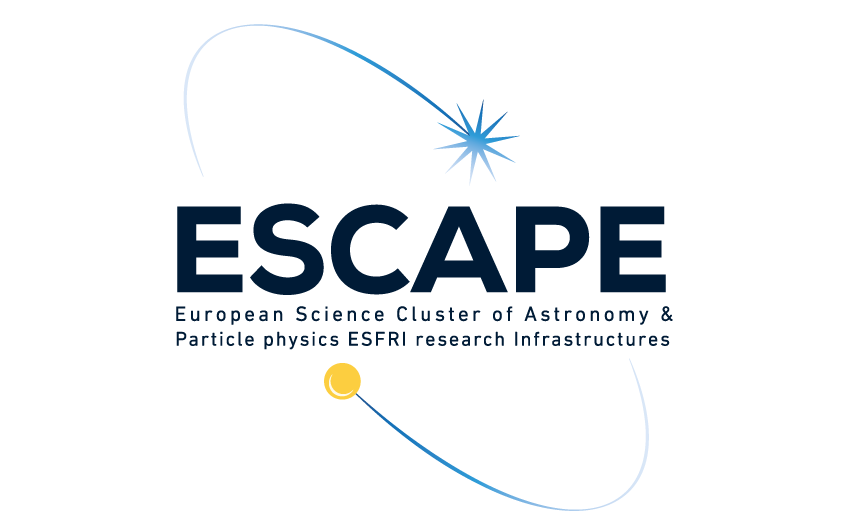

ESCAPE CEVO team has as its main challenge the seamless connection of ESFRIs and other astronomy and astroparticle research infrastructures (RI) to the European Open Science Cloud (EOSC) through the ESCAPE Virtual Observatory (VO). How can we access and discover data, as well as manipulate standards in order to integrate them in the EOSC? What are the connection points? These are some questions addressed by the ESCAPE CEVO team in the just published report “D4.4. Intermediate Analysis Report on Integrating of VO Data and Services into EOSC”.
This document provides an intermediate analysis report of the status of the integration as well as the remaining integration goals to be addressed over the coming months. Success stories, ongoing efforts and description of the current and foreseen challenges can be found in the report.
Integrating data and service resources on IVOA into EOSC with a FAIR approach
ESCAPE has investigated and applied solutions to integrate data and services based on IVOA architecture into that of the EOSC. Most of the progress is from the technical side, since the technologies involved were compatible, while the remaining progress on other aspects was slower due to the fact that EOSC structure is still being discussed within the EOSC development bodies and projects, namely service provision, architecture, semantics integration and vocabularies.
Still from the technical side, ESCAPE has also focused on developing its work that would be FAIR compatible, which matches with both IVOA’s vision and also the European Open Science strategy, by defining building blocks for FAIR data sharing. This approach will support resources provision, easy access to public data holdings that form the predominant case in astrophysics. The effect of facing a multi-disciplinary environment has proven a challenge mostly because the astrophysical community has concentrated on its science needs with respect to data sharing and reuse, which has led it to overcome obstacles like the authentication and authorization of users to access the discovery and the retrieval services. By embracing FAIR, this has allowed a direct path in maturing a re-usable and interoperable paradigm of the VO that, consequently, has brought into its architecture the findability, accessibility and interoperability aspects, thus completing the FAIR principles scenario in an operational framework at an early stage.
Cross-team effort to improve data management in Europe
The different teams in ESCAPE have also contributed to the ESCAPE CEVO work. ESCAPE Open-source Scientific Software and Service Repository (OSSR) will make available a portfolio of software and services through EOSC, also through containerisation. This collaboration will facilitate the contribution of ESCAPE VO resources to the ESCAPE repository and requirements gathering on media type annotations from the VO scenario. ESCAPE ESFRI Science Analysis Platform (ESAP) is contributing with the EOSC Hybrid Cloud with technical standard solutions, namely the integration of the ESAP with the data resources. A specific aspect connected to this integration is the discussion of the AAIs (Authentication and Authorization Infrastructures) and how they affect the existing landscape of VO resources and services. Plus, ESCAPE ESAP will require standardised access to the Data Lake solution, provided by ESCAPE Data Infrastructure for Open Science (DIOS).
Besides these synergies inside the ESCAPE project, the ESCAPE CEVO team has been connecting with other EOSC related projects and participating in meetings and symposia in the EOSC landscape, to understand the requirements and solutions from other research domains, and to acquire knowledge of the work performed by other projects and how astronomy could fit in.
For instance, the ESCAPE CEVO team leader (Mark Allen, from Strasbourg Astronomical Data Centre) is one of the Champions from the FAIRsFAIR project and contributed actively to the two workshops on metadata catalogue integration. This allowed ESCAPE to be part of the discussion on the possible generic solutions and how disciplinary frameworks could interface with them. Another example was the synergy with the Research Data Alliance (RDA) FAIR Data Maturity Model, where an assessment was performed of how the IVOA framework was aligning with the proposed RDA Maturity Model and to identify discrepancies
These and other activities are allowing the identification of the proper interface and contacts to guide the process of aligning the features and characteristics of the mature, community-driven architecture of the IVOA with the more recent architectural components of the EOSC.
ESFRIs and RIs within EOSC to build, find and use data resources and services
The main next challenge to be addressed by the ESCAPE CEVO team is to provide a solution for ESFRIs and RIs within the EOSC to build their data resources and services, adopting a VO-aware vision and, as seamlessly as possible, find those same resources available in EOSC itself and able to use the other resources provided within the EOSC such as computing resources. To make this a reality, depending on the he actual status of the EOSC development and finalisation, ESCAPE will tackle several challenges, namely:
- Attach data holdings to resource descriptions (not only PIDs for metadata);
- Provide relationships among data resources and attached services;
- Test, and make easier, the integration of VO-enabled data provider managed resources in the portal;
- Deal with current AAI services and solutions without preventing public content access;
- Work on action ability for domain-specific services and annotations through the EOSC portal;
- Evaluate the position of VO-enabled data with respect to EOSC FAIR Metrics.
By the end of the ESCAPE project, with the listed challenges to overcome, the ESCAPE VO will be a pioneer in data sharing with a well-established alliance of international partners who cooperate to build the necessary interoperability standards.
Read “D4.4. Intermediate Analysis Report on Integrating of VO Data and Services into EOSC” for more detailed info
Views
36,483

